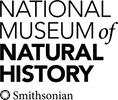Leucochloridium
Description:
Summary[edit] Description: English: A flatworm (Platyhelminthes, Trematoda) of the genus Leucochloridium parasitising a snail of the family Succineidae (probably Succinea putris or an Oxyloma sp.). The banded pulsating structure visible within the tentacles of the snail are the sporocysts's broodsacs filled with cercariae. The cercariae need to be ingested by a bird to develop up to adult stage in the digestive system of the bird. The change in color and aspect (pulsations) of the snail increases the probability to be eaten by a bird. Locality : Belgium, Jambes, Réserve Naturelle de la Poudrière Keywords: Aggressive mimicry, parasite Français : Un Plathelminthe (Platyhelminthes, Trematoda) du genre Leucochloridium parasite d'un escargot de la famille Succineidae (probablementSuccinea putris ou Oxyloma sp.). Les structures de bandes pulsatiles visibles dans les tentacules de l'escargot sont les sacs des sporocystes, emplis de cercaires. Les cercaires doivent être ingérées par un oiseau pour se développer en un adulte, dans le tube digestif de l'oiseau. Les changements de couleur et d'aspect (pulsations) des tentacules accroissent la probabilité pour l'escargot d'être mangé par un oiseau. Localité : Belgique, Jambes, Réserve Naturelle de la Poudrière. Date: 19 June 2012. Source: Own work. Author: Gilles San Martin. : This file was selected as the media of the day for 25 June 2012. It was captioned as follows: English: A flatworm (Platyhelminthes, Trematoda) of the genus Leucochloridium parasiting a snail of the familly Succineidae (probably Succinea putris or an Oxyloma sp.). The banded pulsating structure visible within the tentacles of the snail are the sporocysts's broodsacs filled with cercariae. The cercariae need to be ingested by a bird to develop up to adult stage in the digestive system of the bird. The change in color and aspect (pulsations) of the snail increases the probability to be eaten by a bird. Other languages English: A flatworm (Platyhelminthes, Trematoda) of the genus Leucochloridium parasiting a snail of the familly Succineidae (probably Succinea putris or an Oxyloma sp.). The banded pulsating structure visible within the tentacles of the snail are the sporocysts's broodsacs filled with cercariae. The cercariae need to be ingested by a bird to develop up to adult stage in the digestive system of the bird. The change in color and aspect (pulsations) of the snail increases the probability to be eaten by a bird.Македонски: Сплескан црв од родот Leucochloridium како живее паразитски во полжав. Прстенестиот израсток во роговите на полжавот е утроба на паразитот, полна со ларви (церкарии). Рогот светка со силни бои за да ги привлече птиците да ја лапнат утробата, кајшто ларвите потоа се развиваат во стомакот на птицата.中文(简体): 寄生在琥珀螺科蜗牛上的Leucochloridium属吸虫。蜗牛触角上的环带结构是充满尾蚴的孵化囊。尾蚴需要在鸟类消化系统中成熟。蜗牛触角的颜色和形态上的变化增加了其被鸟类捕食的机会。.
Included On The Following Pages:
- Life
- Cellular
- Eukaryota (eukaryotes)
- Opisthokonta (opisthokonts)
- Metazoa (animals)
- Bilateria
- Protostomia (protostomes)
- Spiralia (spiralians)
- Platyhelminthes (flatworms)
- Rhabditophora
- Trematoda (flukes)
- Brachylaimoidea
- Leucochloridiidae
- Leucochloridium
This video is not featured in any collections.
Source Information
- license
- cc-by-sa-3.0
- copyright
- Gilles San Martin
- creator
- Gilles San Martin
- original
- original media file
- visit source
- partner site
- Wikimedia Commons
- ID


